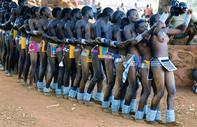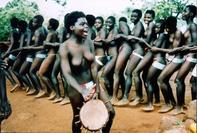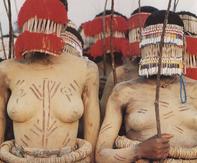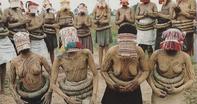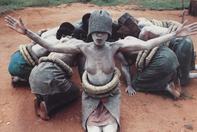
The Symbols Associated with Female Initiation Rites
Ceremonies of South Africa
Many young Venda women still attend the dombani, a premarital school in which participants perform a dance emulating the movement of a python. According to Venda traditionalists, this is associated with fertility.
In the past, Venda girls attended three initiation schools, first the vhusha, followed by the tshikanda, and finally the domba where, through dance, the girls enacted the mysteries of conception, the growth of the foetus and childbirth.
At one stage in their symbolic transition to adulthood, South Sotho female initiates cover their faces with woven grass masks and wear bulky grass belts associated with purity and fertility. They also decorate their clay-covered bodies with patterns, many of which echo the murals married women paint on their homesteads.
In the past the skirts, aprons and rings worn by South Sotho initiates were made after the initiation commenced. To this day, this preparatory remains lengthy in Lesotho, but among communities living in the Free State, outfits are now made in advance.
The grass hoops worn by female initiates protect the girls against malevolent forces. For this reason, the beginning and end of the grass bands are interwoven to prevent evil spirits from entering the protective circle.
By
Professor Sandra Klopper